In today’s fast-paced and often overwhelming world, it is essential to equip children with the emotional intelligence skills to navigate their feelings. Emotions worksheets can be an extremely valuable tool in promoting self-awareness, empathy, and resilience in our little ones. The beauty of printable emotions worksheets designed for kids, parents, and educators is that it’s an instant resource to guide children through identifying, understanding, and expressing their emotions.
Let’s help our little ones get out their inner emotions with these feelings and emotions worksheets pdf that are sure to make learning a whole lot more fun! We all know that kids can be a rollercoaster of feelings, swinging from joy to frustration in a matter of seconds. I will tell you I’ve learned the hard way by not giving enough choices in almost any and everything.
This is a printable Emotions Social Story Kit that is an interactive activity to allow them to identify and explore emotions. These are perfect emotions worksheets for kindergarten and preschoolers. It can be hard for them to express themselves at this age.
They just might have your little ones giggling at the characters and thinking is that me? LOL. Whether they’re feeling happy, sad, or hangry (yes, it’s a legit emotion), these emotions printable worksheets are here to teach them about their feelings while keeping boredom at bay. So grab your scissors, velcro dots and get ready to dive into the colorful world of emotions–let the emotional exploration begin!
Related: Fun Kids Role Play Ideas
Different Emotions Kids Experience
From the highest highs to the lowest lows, children experience a whole spectrum of feelings that can leave even adults scratching their heads. While sometimes it might feel confusing or overwhelming, understanding and embracing our emotions is an essential part of growing up.
1. Happiness – The Warm Glow Inside: It’s like finding a pot of gold at the end of a rainbow. Remember those moments when your favorite ice cream flavor makes your taste buds dance with joy? Or when you finally conquer that tricky video game level? That feeling is pure happiness! It fills us up with warmth and brings smiles to our faces.
2. Excitement – Ready, Set, Go! Imagine waking up on your birthday morning or hearing about an upcoming adventure-filled vacation–that bubbling sensation inside you is excitement! You can find it in trying something new or receiving good news. Excitement makes life thrilling and gives us butterflies in our tummies. This emotion knows no bounds. Buckle up parents; excitement can only be contained by releasing it through enthusiastic dancing, squealing, and rapid-fire questions. At least this is what happens in my house.
3. Sadness – The Rainy Clouds Above: Sadness can feel like rain clouds hovering over our heads. Maybe you miss a friend who moved away or had to say goodbye to your pet; these experiences can bring tears to our eyes and make us feel blue. But remember, it’s okay to be sad sometimes because this emotion teaches us empathy and resilience.
4. Anger – Flames That Need Taming: Anger can be fiery hot like dragon breath but also powerful if used wisely! When things don’t go as planned or someone accidentally breaks our favorite toy, anger might flare up inside us. But take deep breaths and count to ten before reacting impulsively–anger helps us learn how to communicate meaningfully and solve problems peacefully.
5. Fear – Conquering the Monsters: Boo! Fear is like a monster hiding under our beds, but we can face it bravely. That sneaky emotion that creeps up on kids when they least expect it. They might be feeling scared of the dark or encountering new situations that make them nervous. Remember, fear helps us stay safe and teaches us to be cautious while exploring the world around us.
6. Love – Heartwarming Hugs: Love is all about those heart-melting moments when you feel as warm as a cup of cocoa.
7. Confusion– All mixed up: Those maybe so, maybe not feelings. I want it but I don’t because I want something else even more. Their thoughts feel completely jumbled and mixed up.
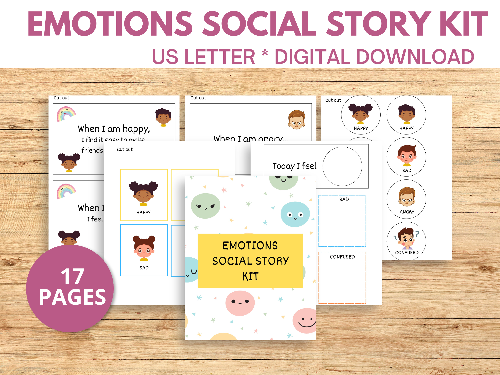
This is an interactive Emotions Social Story Kit with colorful and fun characters to express each emotion.
What’s included:
- (17) pages to include the cover page.
- How do you feel worksheet-on this sheet they can add a character expressing the emotion.
- (3) pages of character icons representing happy, sad, angry, and confused with both girl and boy options.
- (12) pages of coping cards. For beginner readers or read to those who cannot read them. For kids that can read they can keep them in a safe place and read them as needed.
What you’ll need:
- You’ll need a printer or you can have your emotions sheets printed at a print shop like Office Depot/Max.
- Laminate each sheet for long-term use.
- A pair of scissors to cut out your icons and coping cards.
After cutting out icons, I like to keep them in a sturdy pouch that also provides easy access.
Related: Imagination Play Ideas For Toddlers
Benefits of Helping Children Understand And Identify Their Emotions
Helping children understand and identify their feelings is like unlocking a superpower.
1. Building Emotional Intelligence: Just like learning to read or ride a bike, understanding emotions is an essential life skill for our little ones. By helping our kids with their emotions early on, we equip them with emotional intelligence that will help them throughout their lives. It will help them navigate social relationships, communicate effectively, manage stress, and make better decisions.
2. Enhancing Self-Awareness: Understanding emotions allows kids to develop self-awareness–the ability to recognize their own feelings as they arise. This superpower enables them to better understand why they feel a certain way, laying a foundation for increased self-control and empathy toward others. I’m learning as they grow, self-awareness is major in setting personal boundaries and understanding personal strengths.
3. Strengthening Communication Skills: Imagine if everyone had mastered expressing their emotions clearly from an early age – what an incredible world it would be, right? Often than not kids who can effectively identify their feelings are more likely to express themselves openly.
4. Developing Coping Mechanisms: Life isn’t always rainbows; sometimes thunderstorms roll in too! When children understand how different emotions manifest within themselves, it becomes easier for us grown-ups to help them build healthy coping mechanisms when faced with challenges or disappointments.
5. Nurturing Empathy and Social Skills: Understanding emotions isn’t just about ourselves; it’s also about developing empathy towards others. When children can identify and relate to their own feelings, they’re better prepared to recognize similar emotions in their peers.
Related: Creative Summer Preschool Worksheets
How Emotions Worksheets Help Kids
- Identify and understand different emotions: Emotions worksheets can help kids learn to recognize and label various emotions such as happiness, sadness, anger, fear, and surprise.
- Worksheets can help build self-awareness by helping children understand the causes and effects of different emotions and how to manage them effectively.
- Emotions worksheets allow children to reflect on their own feelings and gain a better understanding of themselves.
- By using feelings worksheets, kids can learn how to express their emotions clearly and effectively, both verbally and non-verbally.
- Reduce impulsivity: This Emotions Social Story Kit comes with coping cards to help children better understand each emotion and develop strategies for alternative ways of dealing with challenging emotions.
- Boost problem-solving skills.
- They can serve as a visual aid to recognize and express feelings.
- Emotions and feelings worksheets provide children with tools for coping with stress or overwhelming feelings in a healthy manner instead of resorting to harmful behaviors like aggression or withdrawal.
- Support overall well-being.
- Promote mindfulness practices.
Related: Interactive 4-Year-Old Chore Chart
Tips for Using Emotion Identification Worksheets with Kids
In the Print It Mo shop, as mentioned above you’ll find a story kit that is focused on emotion identification. They focus on helping kids recognize different emotions by providing visuals including pictures of children expressing specific feelings. It’s an excellent starting point.
1. Create a Safe Space: Before introducing emotion identification worksheets, it’s a good idea to establish a safe and supportive environment where children feel comfortable expressing themselves. Also, encourage open communication by letting them know it’s totally okay to have different emotions at different times.
2. Start with Familiar Emotions: Begin with basic emotions like happiness, sadness, anger, or fear when using these worksheets for the first time.
3. Make It Fun: Remember, learning should always be exciting. Add an element of playfulness by incorporating games or role-playing activities with the worksheet exercises if at all possible.
4. Use Visual Aids: Children often respond well to visual cues; use the illustrations showing various facial expressions associated with each emotion category. It can be especially helpful for younger kids who might struggle with verbalizing their feelings.
5. Discuss Real-Life Scenarios: Connect the worksheet activities to real-life situations so that children can relate better.
6. Foster Empathy: Emotion identification worksheets are an excellent tool for nurturing empathy in children. Engage them in discussions about how different emotions might affect others’ thoughts and actions.
Types of Emotions worksheets
Here are a few other types of emotions worksheets for kids:
- Word searches aren’t just a way to pass the time; they can also be educational. An emotion word search worksheet is a sheet of paper full of letters, hiding words related to different emotions. By finding these words, bigger kids can improve their vocabulary and also become familiar with the language used to describe various feelings.
- Who doesn’t love coloring? Coloring pages combine creativity with emotional exploration. These types featuring different facial expressions give individuals a chance to express themselves creatively while acknowledging and discussing each emotion as they color.
- Feelings Wheel Worksheets: Feelings wheels are circular diagrams with various emotional states arranged in categories such as happy, sad, angry, scared, etc., branching out into more specific sub-emotions (e.g., excited, frustrated). With these worksheets, individuals spin the wheel or select an emotion and then reflect on times when they experienced that feeling.
- Daily Mood Tracker: A daily mood tracker is like a personal diary where bigger kids can record their emotions throughout the day using simple emojis or written descriptions. A worksheet like this encourages self-reflection and awareness about how our feelings change from time to time.
- Sentence Completion Worksheets: Sentence completion exercises provide partial statements relating to emotions that need to be finished by filling in words or phrases. For example: “When I feel sad, I like to…” This helps with coping strategies.
- Emotion Charades: Who doesn’t love a game of charades? This worksheet takes the classic party game and puts an emotion-focused twist on it. You can act out various emotions without using any words, while others try to guess which feeling they are portraying. It’s a fun way to engage everyone in the discussion.
Related: What Is A Learning Tower And The Best Options
Printable emotions worksheets for kids offer a fun and engaging way for children to explore and understand their feelings. These worksheets provide a valuable tool for parents, teachers, and caregivers to support emotional intelligence development in children. By using these as a resource, you can help your little ones navigate the complex world of emotions with confidence and ease.
So let’s print out these colorful worksheets, don’t forget to laminate your sheets, grab some velcro dots, and embark on an exciting journey of self-discovery together! I hope you find these worksheets about feelings helpful.
Enjoy.
You can also check out the American Psychological Association as a resource for emotional learning.
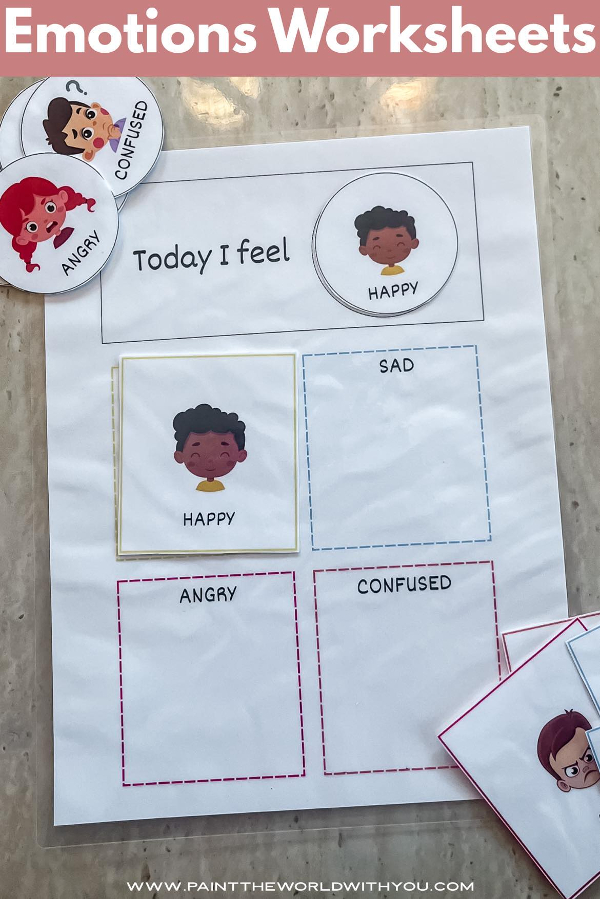
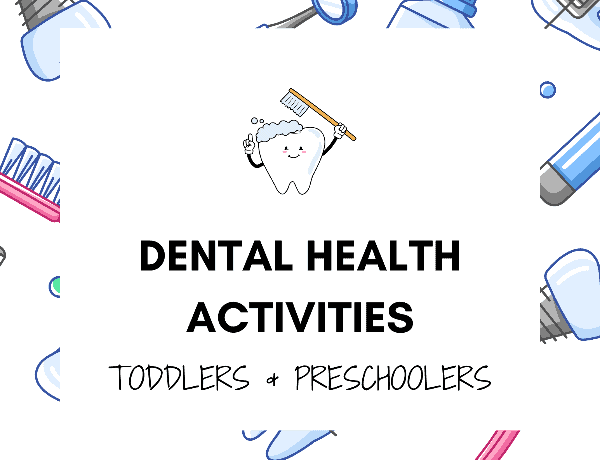
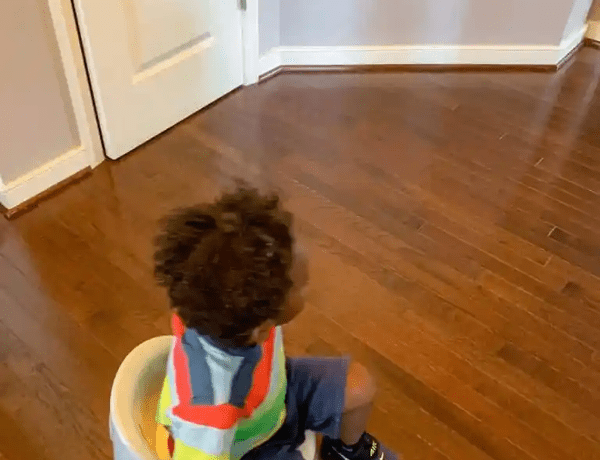
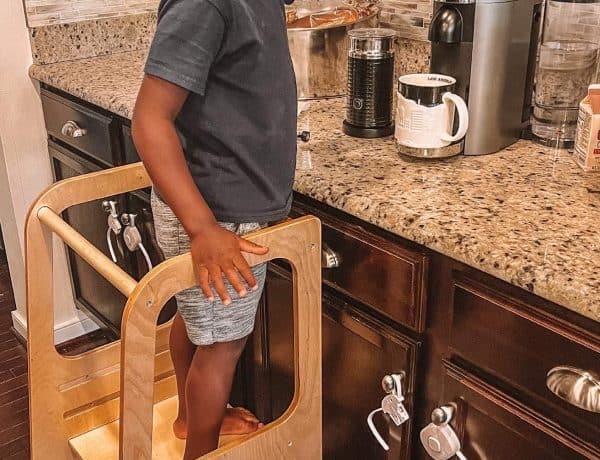
No Comments